Use this Stars lesson plan to learn about the stars in the Milky Way galaxy. You’ll get an introduction to constellations and can print Constellation ID cards to use then you go star gazing with children.
Save time with our ready-made Space teaching unit
For the best space lesson ideas, save time and get our ready-made Space teaching unit from our Play Academy. You’ll get:
- a ready-made Space thematic unit
- bonus printables to make your teaching even easier
- a lesson plan to learn about the planets in our solar system
- a lesson plan to learn about stars and constellations
- a guide on how to go star gazing
- a lesson plan on how to make planet paintings
- a lesson plan to learn about space exploration and make junk model rockets
- a lesson plan to create an outer space small world to stretch your children’s imagination and consolidate their learning
- bonus printables including printable four-part Planet Fact Cards for knowledge learning, re-capping and game playing
- a My Favourite/Favorite Planet Journal Page with fun prompts to write and draw your favourite planet
- a set of Star Alphabet Cards for literacy activities
- a set of Constellation Cards for knowledge learning, star gazing and game playing
- a set Rocket Number Cards for math activities
- plus over 300 more individual lesson plans in 50 ready-made teaching units so you can easily teach an engaging and successful program that includes math, literacy, science, art, and more, all year round, year after year. Everything is planned for you and easy to find, saving you so much time.
Download your Space Unit here
Come and join our popular Play Academy community and never have to lesson plan again! Join here and download your first ready-made unit today.
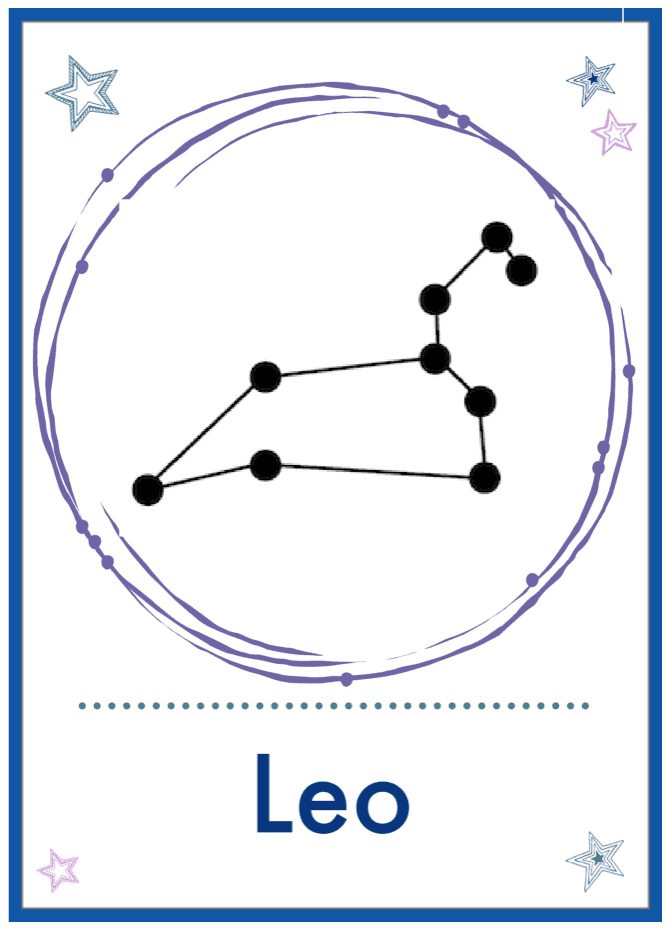
Stars lesson plan
Let’s try one of our space-themed lessons. In this lesson children can:
:: learn what a star is
:: learn key facts about stars in the Milky Way galaxy
:: learn what a constellation is
:: learn how to go star gazing
:: use printable Constellation Cards (which are included in our Play Academy’s ready-made Space Unit) to identify key constellations
:: use a printable Star Alphabet (which are included in our Play Academy’s ready-made Space Unit) for literacy games and to make a constellation of their own name
What is a star?
On the first day of our ready-made Space Unit we learn that we live in a solar system where Earth and the other planets all orbit our sun. Did you know our sun is a star? Let’s learn more about stars and how we group them together in constellations.
A star is a huge ball of gas. They are mostly made of hydrogen and helium and it’s the burning of the hydrogen through a process called nuclear fusion that makes them very, very hot. This process creates light and heat, which is why we can see the sun and feel its warmth.
There are over 200 billion stars in our Milky Way galaxy and the nearest one to us is our sun. After our sun, our nearest star is one called Proxima Centauri and it’s 39.9 trillion km away.
Stars are between 1 and 10 billion years old. They vary in colour depending how hot they are. The hottest stars appear blue, moving through white, yellow, orange, red to brown as they cool.
When we look at stars in the night sky, the Earth’s atmosphere, wind, and temperature makes it look like they twinkle.
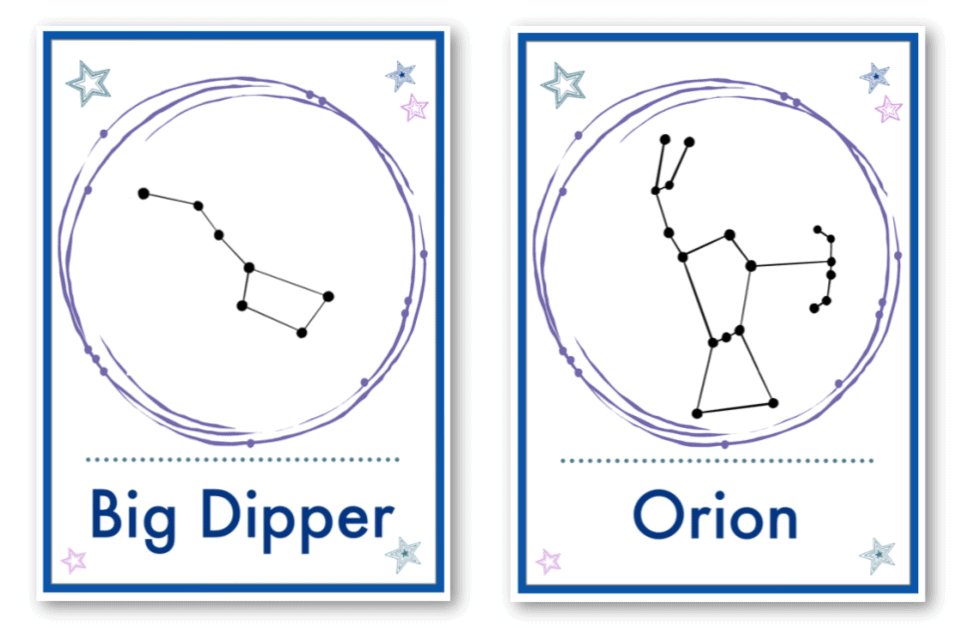
What is a constellation?
The stars we see in our sky are grouped together in constellations. People who have studied stars imagined the stars as dots being joined together by invisible lines to form patterns and pictures, like a connect the dots picture in the sky. The shapes formed by the groups of stars looked like animals, people, and objects and were given names.
You can see examples of these groups on the printable Constellation Cards (which are included in our Play Academy’s ready-made Space Unit), which include Leo, a lion; Taurus, a bull with two horns; and the twins, Gemini.
Two constellations which are often easy to pick out in the night sky are the Big Dipper, which looks like a soup ladle (or in the UK it’s also called the Plough) and the three stars that for the belt of Orion the Hunter, with his bow and arrows held high.
Stars have been very important to people throughout the world and throughout time. They are used in religions, in astrology star signs, to design calendars, and to navigate journeys on land and sea.
Are stars important in your family’s religion or culture?
How to go star gazing with children
On a clear night, when there are no clouds in the way, you can look up at the sky and see stars. You don’t need to use a telescope but it’s best to star gaze in a place where there are few electric lights, so out in the countryside is better than in a city.
Try star gazing this week. Take the printable Star Cards (which are included in our Play Academy’s ready-made Space Unit) out with you and see if you can locate the Big Dipper and Orion constellations.
You can also look for the moon and you might see the planet Venus too, which is the second brightest object in the night sky after the moon.
You can also invent your own constellations: lie down on a blanket and spend a while looking at the stars in the sky.
What patterns and shapes can you see?
What would you call your constellation?
You can draw them in your nature journal.
Save time and get your ready-made Space unit!
Yes, you can do all the planning yourself if you want to, or you can head straight to our Play Academy and download our ready-made Space unit. That sounds like a better idea!
You’ll get a set of lesson plans all based on space: to learn about the planets in our solar system, to learn about stars and constellations, a guide on how to go star gazing, a lesson plan on how to make planet paintings, a lesson plan to learn about space exploration and make junk model rockets, and a lesson plan to create an outer space small world. Plus you’ll get fun printables to make your teaching even easier.
Come and join the Play Academy to get this and over 50 more ready-made teaching units, so you can easily teach an engaging and successful program that includes math, literacy, science, art, and more, all year round, year after year.


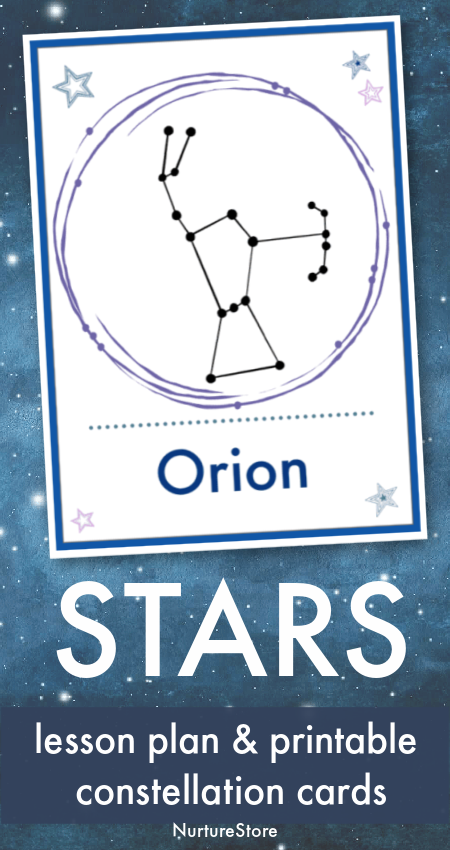
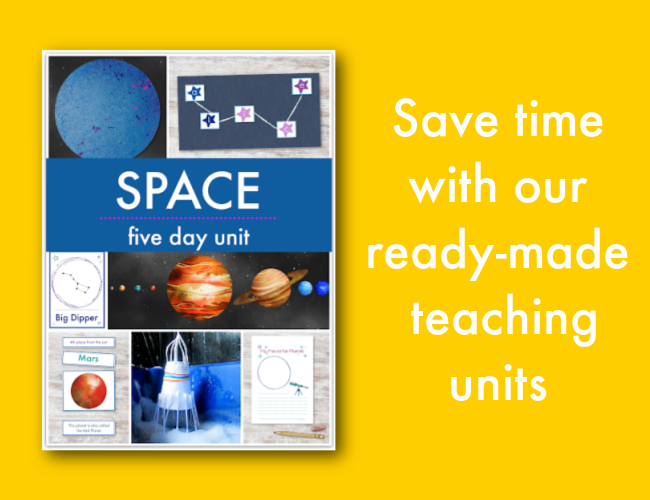
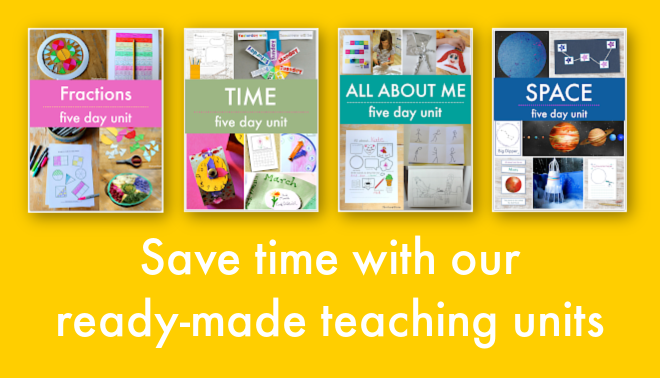
Thanks for the free resource. I’m a fifth grade teacher
I hope your children enjoy making this, Jeanette.
Thanks for the free resource!
Thanks for sending the free resource!
You are welcome Christina!